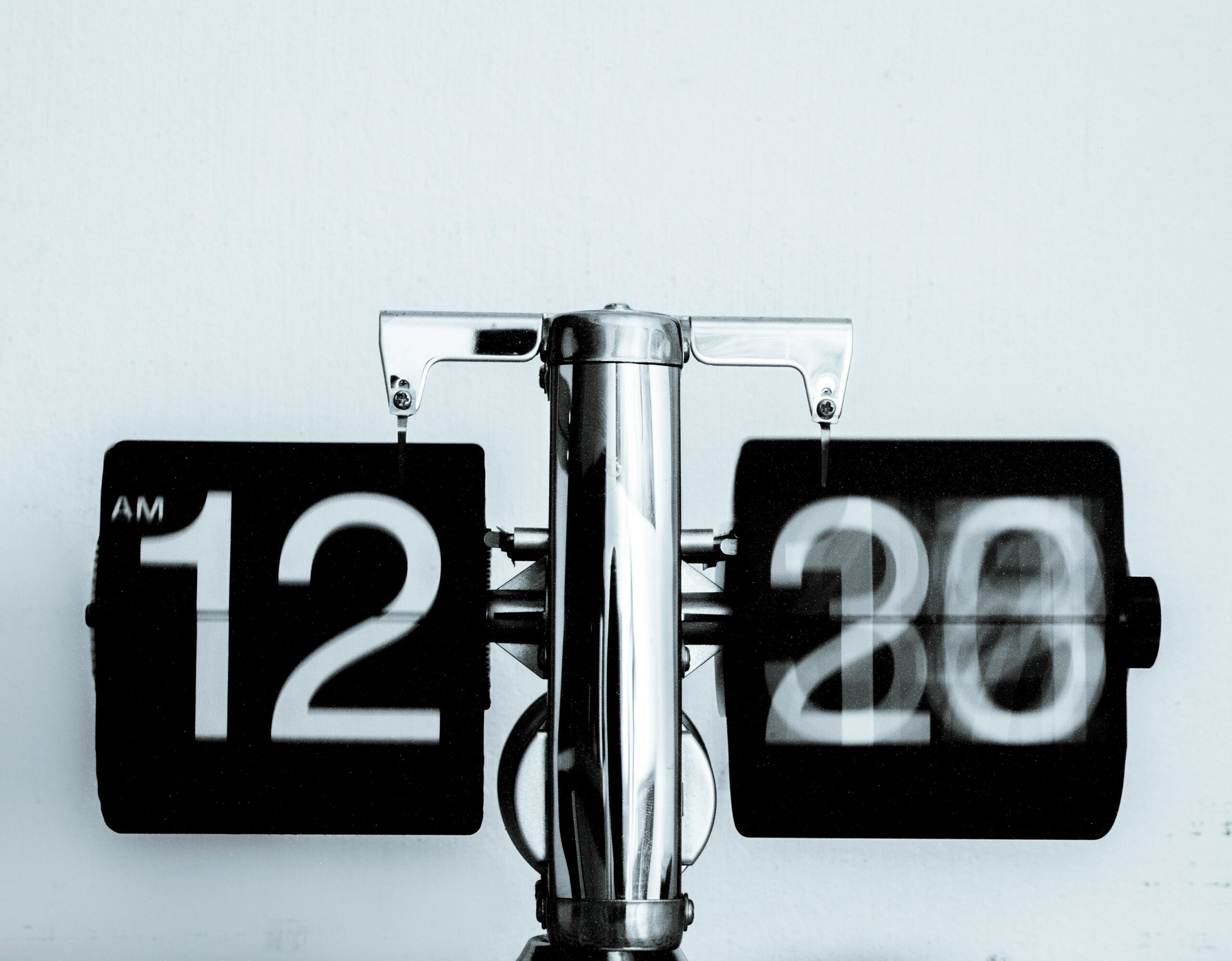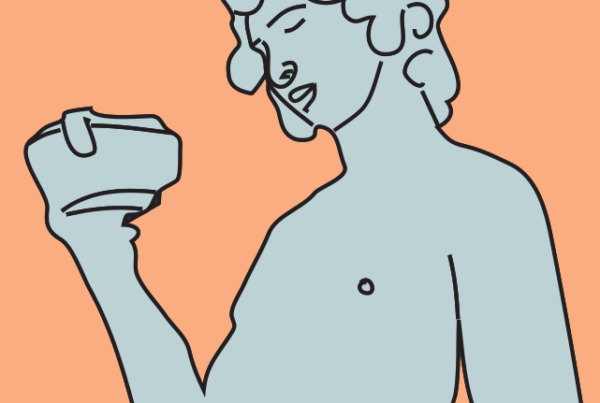
While time is constant in the sense that it continues to progress forward in a linear manner, perception of time is not. Sometimes time flies, other times it feels as though it stands still. This raises the question: what influences our perception of time?
While time is constant in the sense that it continues to progress forward in a linear manner, perception of time is not. Sometimes time flies, other times it feels as though it stands still. This raises the question: what influences our perception of time?
Chronoception, the sense of time perception, is different from the five primary senses. It is not localized in just one part of the brain, nor does it have specialized receptor cells (Hellier, 2017). Rather, it seems to be distributed across various brain regions, such as the cerebral cortex, cerebellum, and basal ganglia. However, one brain area stands out: the suprachiasmatic nucleus (SCN), also known as the biological clock, which plays a pivotal role in regulating circadian rhythms. It receives input from the eyes regarding light exposure and uses this information to synchronize the body’s internal clock with the external environment (Foster & Kreitzmann et al., 2017). The SCN, situated within the hypothalamus, resides in one of the brain’s evolutionarily older regions. Remarkably, this brain structure appears to be similar in rats. Research involving rats has revealed that even when the neocortex, the higher-order thinking part of the brain, is removed, they are still capable of accurately timing intervals of forty seconds (Jaldow et. al., 1989). It suggests our sense of time developed early in evolution and is an important function of the brain.
Despite this complex brain network, humans are far from interpreting time accurately. A possible explanation for our skewed time perception comes from the internal clock model, which suggests that arousal level influences our perception of time. Higher levels of arousal, such as increased heart rate and alertness, are associated with a faster internal clock, causing time to seemingly pass more quickly. Conversely, lower arousal levels lead to a slower internal clock and the perception of time passing more slowly (Treisman, 1963). Although certain studies support this theory (Burle, B., & Casini, 2001; Gil, S., & Droit‐Volet, 2012), it does not apply to all situations. For example, people who faced life-threatening events, such as experiencing an earthquake, commonly report that time appeared to slow down despite the increased arousal associated with the event (Buckhout et al., 1989). It suggests that variables other than arousal also influence time perception.
“Despite this complex brain network, humans are far from interpreting time accurately.”
Another explanation of how we perceive time comes from attentional models of time perception. These models suggest that when more attention is given to temporal information processing, more neural resources are allocated to temporal processing, resulting in the perception of time passing more slowly (Donaldson & Paulman, 2013). For example, if the playhead of a YouTube video is visible, viewers may designate attention to the playhead rather than the video content, leading to the perception of time passing more slowly. This is a situation that students are all too familiar with, as not all teachers notice that the playhead is visible when showing videos in class.
This is a classic example of boredom, something we are all familiar with. Interestingly, there is a common misconception around it that boredom, which is commonly thought of as being a state of low arousal, can also be a state of high arousal. A study by Van Hooft and Van Hooff (2018) suggests that this might have to do with situational factors, such as task autonomy – the extent to which people control when and how tasks are done. When task autonomy is low, boredom results in more frustration and higher arousal, whereas when task autonomy is high, boredom results in a more depressed state and lower arousal. But in both cases, time seems to go by slowly! Attentional models would suggest that, in both cases, less attention is being directed to the situation itself, resulting in attentional resources being allocated to temporal processing, making time slower.
Now, let’s consider the opposite of boredom: being in a flow state. This state occurs when we become so engrossed in an activity that we lose track of time (Csikszentmihalyi, 1990). Unlike boredom, which is characterized by a lack of engagement, flow is marked by intense focus and a deep sense of enjoyment or fulfillment. In this state, attention is fully immersed in the activity itself, leading to a distortion of time perception where hours may feel like minutes.
“Unlike boredom, which is characterized by a lack of engagement, flow is marked by intense focus and a deep sense of enjoyment or fulfillment.”
What else contributes to the feeling of time passing quickly? Novelty. Research shows that we expend more energy processing new information, and our subjective sense of time strongly correlates with how much energy we are using in our brains (Kuzawa et al., 2014). Interestingly, the age at which we spend the most brain energy peaks around the age of five (Kuzawa et al., 2014). This makes sense because when you are a kid, almost everything is novel to you. This also explains to some extent why time seems to pass more quickly as we age.
While there are still many mysteries surrounding time perception, one common theme emerges: negative emotions often lead to a perception of time passing slowly, while positive emotions tend to make time seem to fly by. This could suggest that a good life is a life that passes by quickly. <<
References
– Buckhout, R., Fox, P., & Rabinowitz, M. (1989). Estimating the duration of an earthquake: Some shaky field observations. Bulletin of the Psychonomic Society, 27(4), 375–378. https://doi.org/10.3758/bf03334633
– Burle, B., & Casini, L. (2001). Dissociation between activation and attention effects in time estimation: Implications for internal clock models. Journal of Experimental Psychology. Human Perception and Performance. https://doi.org/10.1037/0096-1523.27.1.195
– Csikszentmihalyi, M. (1990). Flow: the psychology of optimal experience. New York, Harper & Row.
– Donaldson, C., & Paulman, B. (2013). Time flies when you’re having fun: the influence of continuous attention on the perception of time. Undergraduate Research Journal for the Human Sciences, 12(1). https://www.kon.org/urc/v12/donaldson.html
– Foster, R. G., & Kreitzman, L. (2017). Circadian Rhythms: A very short introduction. In Oxford University Press eBooks. https://doi.org/10.1093/actrade/9780198717683.001.0001
– Gil, S., & Droit‐Volet, S. (2012). Emotional time distortions: The fundamental role of arousal. Cognition and Emotion, 26(5), 847–862. https://doi.org/10.1080/02699931.2011.625401
– Hellier, J. L. (2017). The Five Senses and Beyond: The Encyclopedia of Perception. Bloomsbury Publishing.
– Jaldow, E. J., Oakley, D. A., & Davey, G. C. L. (1989). Performance of decorticated rats on fixed interval and fixed time schedules. European Journal of Neuroscience/EJN. European Journal of Neuroscience, 1(5), 461–470. https://doi.org/10.1111/j.1460-9568.1989.tb00352.x
– Kuzawa, C. W., Chugani, H. T., Grossman, L. I., Lipovich, L., Muzik, O., Hof, P. R., Wildman, D. E., Sherwood, C. C., Leonard, W. R., & Lange, N. (2014). Metabolic costs and evolutionary implications of human brain development. Proceedings of the National Academy of Sciences of the United States of America, 111(36), 13010–13015. https://doi.org/10.1073/pnas.1323099111
– Quigley, J. J., Combs, A., & O’Leary, N. (1984). Sensed duration of time: influence of time as a barrier. Perceptual and Motor Skills, 58(1), 72–74. https://doi.org/10.2466/pms.1984.58.1.72
– Stetson, C., Fiesta, M. P., & Eagleman, D. M. (2007). Does Time Really Slow Down during a Frightening Event? PloS One, 2(12), e1295. https://doi.org/10.1371/journal.pone.0001295
– Treisman, M. (1963). Temporal discrimination and the indifference interval: Implications for a model of the “internal clock”. Psychological Monographs, 77(13), 1–31. https://doi.org/10.1037/h0093864
– Van Hooft, E. a. J., & Van Hooff, M. L. M. (2018). The state of boredom: Frustrating or depressing? Motivation and Emotion, 42(6), 931–946. https://doi.org/10.1007/s11031-018-9710-6
Chronoception, the sense of time perception, is different from the five primary senses. It is not localized in just one part of the brain, nor does it have specialized receptor cells (Hellier, 2017). Rather, it seems to be distributed across various brain regions, such as the cerebral cortex, cerebellum, and basal ganglia. However, one brain area stands out: the suprachiasmatic nucleus (SCN), also known as the biological clock, which plays a pivotal role in regulating circadian rhythms. It receives input from the eyes regarding light exposure and uses this information to synchronize the body’s internal clock with the external environment (Foster & Kreitzmann et al., 2017). The SCN, situated within the hypothalamus, resides in one of the brain’s evolutionarily older regions. Remarkably, this brain structure appears to be similar in rats. Research involving rats has revealed that even when the neocortex, the higher-order thinking part of the brain, is removed, they are still capable of accurately timing intervals of forty seconds (Jaldow et. al., 1989). It suggests our sense of time developed early in evolution and is an important function of the brain.
Despite this complex brain network, humans are far from interpreting time accurately. A possible explanation for our skewed time perception comes from the internal clock model, which suggests that arousal level influences our perception of time. Higher levels of arousal, such as increased heart rate and alertness, are associated with a faster internal clock, causing time to seemingly pass more quickly. Conversely, lower arousal levels lead to a slower internal clock and the perception of time passing more slowly (Treisman, 1963). Although certain studies support this theory (Burle, B., & Casini, 2001; Gil, S., & Droit‐Volet, 2012), it does not apply to all situations. For example, people who faced life-threatening events, such as experiencing an earthquake, commonly report that time appeared to slow down despite the increased arousal associated with the event (Buckhout et al., 1989). It suggests that variables other than arousal also influence time perception.
“Despite this complex brain network, humans are far from interpreting time accurately.”
Another explanation of how we perceive time comes from attentional models of time perception. These models suggest that when more attention is given to temporal information processing, more neural resources are allocated to temporal processing, resulting in the perception of time passing more slowly (Donaldson & Paulman, 2013). For example, if the playhead of a YouTube video is visible, viewers may designate attention to the playhead rather than the video content, leading to the perception of time passing more slowly. This is a situation that students are all too familiar with, as not all teachers notice that the playhead is visible when showing videos in class.
This is a classic example of boredom, something we are all familiar with. Interestingly, there is a common misconception around it that boredom, which is commonly thought of as being a state of low arousal, can also be a state of high arousal. A study by Van Hooft and Van Hooff (2018) suggests that this might have to do with situational factors, such as task autonomy – the extent to which people control when and how tasks are done. When task autonomy is low, boredom results in more frustration and higher arousal, whereas when task autonomy is high, boredom results in a more depressed state and lower arousal. But in both cases, time seems to go by slowly! Attentional models would suggest that, in both cases, less attention is being directed to the situation itself, resulting in attentional resources being allocated to temporal processing, making time slower.
Now, let’s consider the opposite of boredom: being in a flow state. This state occurs when we become so engrossed in an activity that we lose track of time (Csikszentmihalyi, 1990). Unlike boredom, which is characterized by a lack of engagement, flow is marked by intense focus and a deep sense of enjoyment or fulfillment. In this state, attention is fully immersed in the activity itself, leading to a distortion of time perception where hours may feel like minutes.
“Unlike boredom, which is characterized by a lack of engagement, flow is marked by intense focus and a deep sense of enjoyment or fulfillment.”
What else contributes to the feeling of time passing quickly? Novelty. Research shows that we expend more energy processing new information, and our subjective sense of time strongly correlates with how much energy we are using in our brains (Kuzawa et al., 2014). Interestingly, the age at which we spend the most brain energy peaks around the age of five (Kuzawa et al., 2014). This makes sense because when you are a kid, almost everything is novel to you. This also explains to some extent why time seems to pass more quickly as we age.
While there are still many mysteries surrounding time perception, one common theme emerges: negative emotions often lead to a perception of time passing slowly, while positive emotions tend to make time seem to fly by. This could suggest that a good life is a life that passes by quickly. <<



